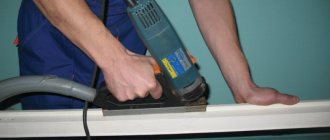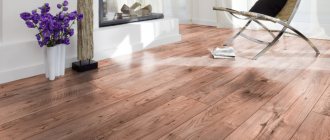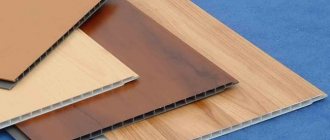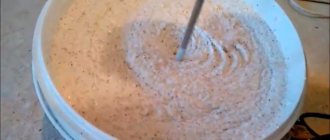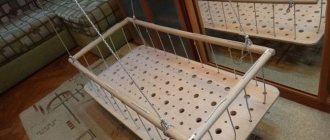Home » Dacha » Insulation of a non-residential attic of a private house
May 25, 2020 No comments
When insulating a house, special attention should be paid to the attic or attic, since it is through this space that the house loses most of the heat.
The reason lies not only in the fact that this is facilitated by a large roof area. It is known that warm air is lighter and, when heated, it rises to the top, namely to the attic, from where it penetrates outside through non-insulated structures.
As a result, if the attic is not insulated, you will have to constantly heat not only your home, but also the surrounding space. In addition to heat loss, this will lead to high humidity in the house, the floors in the rooms will always be cold and, as a result, mold will appear in the house.
There are several options for insulating an attic or attic.
In non-residential premises, it is possible not to carry out full insulation of the entire system; it is enough to insulate the floors well so that air from the lower floors does not penetrate into the attic, and cold from the attic does not seep into warm rooms.
Options for insulating a non-residential attic
Before starting work, you need to decide what material will be used, how much of this material will be required and what additional fastening materials and tools will be needed to install the structure.
Calculations should be made to determine the amount of heat loss through the attic, on the basis of which the thickness of the layer of insulating material can be determined.
Sometimes a lot of insulation is required, so it is better to choose a material that is not very heavy so as not to overload the entire structure. For example, expanded clay is a fairly heavy material and before using it you should make sure that it will not damage the load-bearing structures of the house.
In addition, the thermal insulation properties of the attic floor must be maintained both in winter and summer in order to avoid both heat loss and overheating of the interior of the house.
In order for the insulation to last as long as possible and to justify all financial and physical costs, it is important to make the right choice in favor of high-quality material and correctly install it. For example, in a loose heat insulator, regular air circulation occurs (convection cell).
Convection of loose ceiling insulation
It turns out that moving air constantly pulls out the heat retained by the insulation, and the lower the air temperature in the attic, the more intense the convection and removal of heat from the insulation. At the same time, the heat flow into the insulation through the ceiling increases.
Gradually, the throughput of the insulation increases, and the resistance to heat movement decreases, and as a result, the effectiveness of thermal insulation decreases significantly. To avoid this, it is necessary to carefully consider the insulation scheme, use high-quality material and install it conscientiously.
Helpful advice
To insulate the attic floor, you can use mineral wool, polystyrene foam, expanded clay or polyurethane foam as thermal insulation material. In the first three cases, you will additionally need waterproofing material (for example, glassine), mounting foam, foam for sealing joints and cracks, as well as floor covering (this can be ordinary boards, wood boards, etc.). Spraying polyurethane foam will require a special installation.
Thermal insulation with mineral wool
First of all, you should prepare the surface of the attic floor - remove debris and dust. Then the attic floor needs to be covered with waterproofing film.
When placed in a humid environment, mineral wool loses its thermal insulation properties, so it is better to spread the film for moisture insulation with a reserve, placing its edges on the walls or side beams and fastening them with a construction stapler.
The next step is the installation of a wooden sheathing (frame).
To do this, you need to fix wooden planks on top of the film in such a way that insulation boards can be laid between them. If the attic floor has wooden beams, mineral wool can be placed between them. If there are significant heat losses through the ceiling, several layers of insulation will need to be laid.
The last layer of wool must cover the beams. If this is not done, the wooden beams will become cold bridges through which heat will continue to leave the room.
All cracks and voids should be filled with pieces of insulation or filled with construction foam, and the joints between the mats should be sealed with tape.
Then a second layer of vapor-proof film is laid, since mineral wool must be protected on both sides.
Top layer of insulating film
After this, we can assume that the structure is ready. However, if the attic space will be used frequently, it is necessary to lay a floor made of boards or wood panels (fibreboard, chipboard) on top of the thermal insulation.
This will better protect the insulation from damage when walking on it. If the attic will not be used, it is enough to nail a few boards along which you can move, like on paths.
Prices for mineral wool
Insulation using expanded clay
Expanded clay is used to insulate attic floors in cases where heat losses in the house are insignificant and you can get by with a small amount of insulation so as not to weigh down the load-bearing structure.
Expanded clay has many advantages over other insulation materials: it is inedible for rodents, durable and, since it is bulk insulation, it easily fills all the unevenness and hard-to-reach places on the surface. To ensure that there are no voids left when insulating with expanded clay, granules of different sizes should be used.
In addition, expanded clay is not afraid of moisture, so it does not need to be protected from it and you do not need to spend money on purchasing waterproofing material.
However, the thermal insulation characteristics of this material are relatively low, so for greater efficiency you will still need to pour a fairly thick layer, which will increase the load on the floors of the house. In this case, it is recommended to combine expanded clay with mineral wool, which will make it possible to make multi-layer insulation, making it somewhat lighter due to lighter mineral wool.
The technology of insulation using expanded clay is quite simple:
You need to pour a layer of insulation onto the attic floor that has been cleared of debris, and then cover it with a cement-sand mortar screed. In the attic, which is subsequently planned to be used as a living space, you can lay laminate or linoleum on top of the finished screed, or limit yourself to flooring made of boards or wood boards.
If there are communication pipes in the attic, they can also be insulated with expanded clay, which will provide the ventilation necessary in such places and protect the structure from fire if the pipes become very hot.
When combining expanded clay with mineral wool, you will need to use an insulating film to protect the structure from moisture. First, the floor is covered with a vapor-proof material, then a layer of expanded clay is poured onto which lathing and mineral wool slabs are laid, and another layer of film is laid on top.
After this, you can make a flooring from boards or other material to cover the floor.
Types of insulation
The technology for laying each insulating material has its own characteristics, but there are general requirements for this process. Work is performed in a certain sequence. Initially, a vapor barrier is provided for the cold attic, then insulation is installed, and at the final stage - a material that protects the thermal insulation from the wind.
Insulation materials are divided into three groups:
- tiled – mineral wool, polystyrene foam, polystyrene foam, reeds;
- rolled - flax, mineral wool, glass wool;
- bulk - expanded clay, slag, ecowool, sawdust, straw.
Insulation using foam plastic
This material is most in demand compared to others when insulating cold (non-residential) attics. In this case, you can use both slabs and bulk foam. In any case, this material will not weigh down the structure, even if the foam layer is thick enough. Installation of foam insulation is very simple and can be done alone. The slabs are easily cut with a knife, and if necessary, for better joining, they can be trimmed directly inside the sheathing.
If old-style polystyrene foam was dangerous due to its flammability, now non-flammable types of this material are produced. It is quite cheap and in terms of environmental friendliness will not pose a great danger, since the attic space in this case will be non-residential.
The technology for insulating the attic floor with foam plastic slabs is similar to installing mineral wool. First, the ceiling should be protected with waterproofing.
To do this, you can use glassine, having previously cut it into strips so that the material fits between the beams. When laying on the floor, it should be placed 5 cm on the beams, and then secure the ends to the ends of the beams using wooden slats or a construction stapler.
After this, the foam boards need to be cut with a knife so that they fit between the ceiling beams.
After laying the heat insulator, the remaining cracks and voids should be filled with polyurethane foam. The upper edges of the floor beams must be covered with insulation.
A second layer of waterproofing is laid on top of the structure, and then the flooring can be laid (boards, fiberboard or chipboard, linoleum, etc.).
The number of layers of insulation directly depends on the heat loss of the house. Layers of foam can be alternated with mineral wool or expanded clay. In any case, the main thing is high-quality installation of the entire structure.
How to insulate a cold attic with straw
An alternative to using sawdust is insulation with straw:
- Initially, the base of the attic is covered with a layer of clay no more than 5 mm.
- Next, the straw is laid. The thickness depends on climatic conditions and can vary from 20 to 50 cm.
- When using this insulation, the fight against mice is also a pressing problem. To do this, use slaked lime with the addition of carbide or another substance that can prevent the appearance of rodents.
- To prevent fire of the thermal insulation material, clay is applied on top of the straw in a layer of 2 cm.
Insulation using sprayed polyurethane foam
Today it is possible to carry out thermal insulation on your own by spraying polyurethane foam using special kits - disposable 2-component installations for insulation and sealing of various structures. And although this material is not cheap, it is completely worth it.
Polyurethane foam is applied directly to the ceiling by spraying from above - either between the joists of a wooden attic floor, or onto a concrete slab or screed, if it is permanent. It is important to spray polyurethane foam continuously to obtain a uniform, seamless layer of the required thickness without cold bridges.
The foam easily penetrates even into inaccessible cracks and recesses, quickly hardens and forms an even water-, steam- and heat-proof layer.
The floor surface treated with polyurethane foam does not require additional floor covering and you can walk on it without fear of damaging or compromising the integrity of the structure. However, if the attic or attic is planned to be used as a living space, you will need to cover the floor with wood boards, boards, linoleum, etc.
The thickness of the sprayed polyurethane foam layer is determined based on specific conditions (heat loss at home) and the requirements of SNiP. On average, to achieve effective thermal insulation of the attic floor and attic, a layer of polyurethane foam 7-9 cm thick will be required.
If access to the attic floor is limited, you can spray it from below onto the ceiling inside the living space.
Helpful advice
The method of insulating attic floors by spraying polyurethane foam is very effective, and therefore has recently become increasingly popular. Such insulation is durable, resistant to chemicals, microorganisms and temperature changes, and inedible for rodents.
The weight of the insulation is small, so the supporting structures are not overloaded and even acquire additional adhesive rigidity. Due to the fact that the insulation layer is very thin, neither the total area nor the volume of the attic or attic is reduced.
One of the few disadvantages of this type of thermal insulation is its cost, but in any case it is better to do the job well once than to return to this problem again and again. It should also be recalled that this material, suitable for arranging a cold attic, does not “breathe” and is therefore not very suitable for residential premises.
Video: Insulation of a non-residential attic of a private house
(No Ratings Yet)
The use of drains made of seaweed and linen insulation
The ladders are made from zostera - seaweed. This is a natural material with high thermal insulation qualities, which is not subject to rotting, as well as to the influence of microorganisms and mice. Iodine and sea salt give the drains these properties. When in contact with fire, they do not light up, but only smolder a little. At the same time, no toxic elements are released. Algae are not susceptible to moisture. Therefore, during their installation there is no need to lay a vapor barrier. The drains are mounted directly on the ceiling surface in a layer of up to 20 cm. Linen insulation is produced in the form of rolls. They are made on the basis of natural raw materials, which makes the material absolutely environmentally friendly. They are used in most cases for insulating attics of wooden houses.
The installation technology for such insulation is quite simple. Preparatory work is limited to eliminating cracks in the ceiling; they are covered with clay. There is no need for a vapor barrier. Then the linen rolls are laid. When installing, you need to make sure that there are no gaps.
